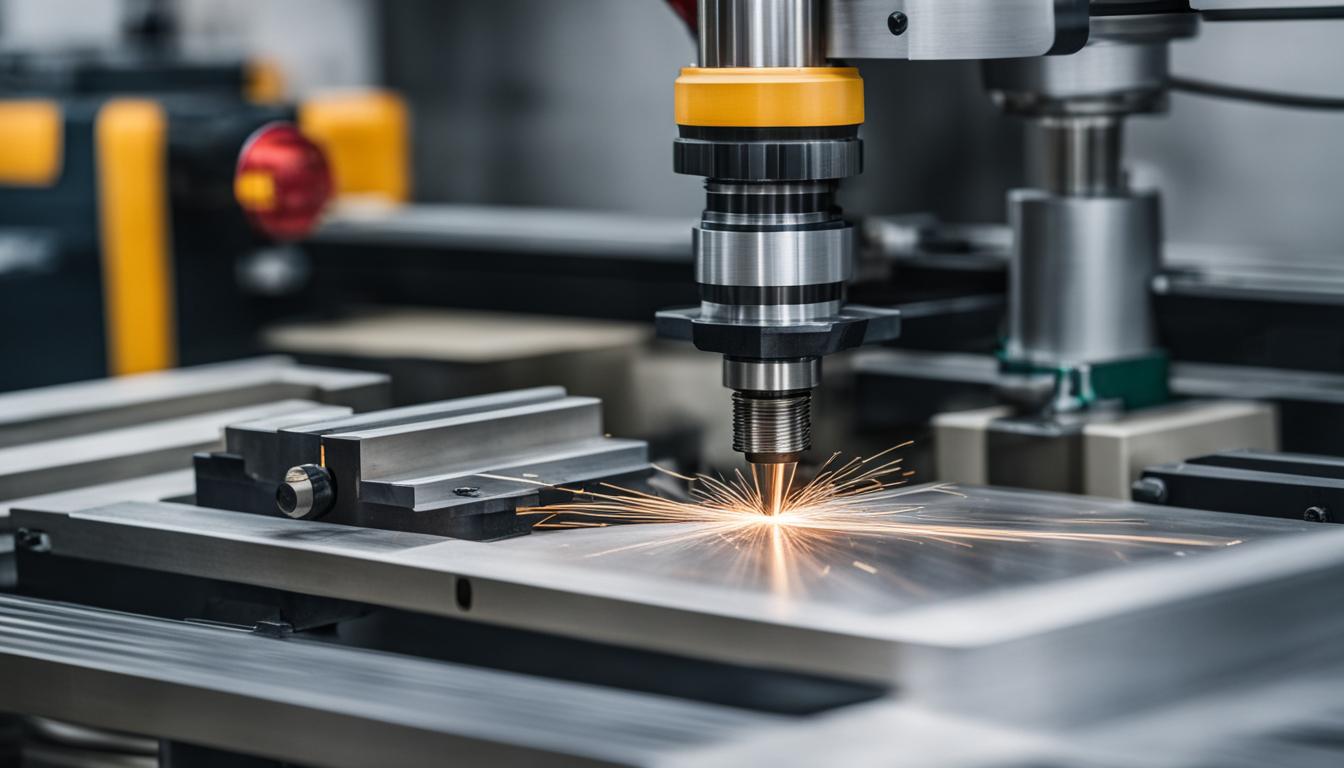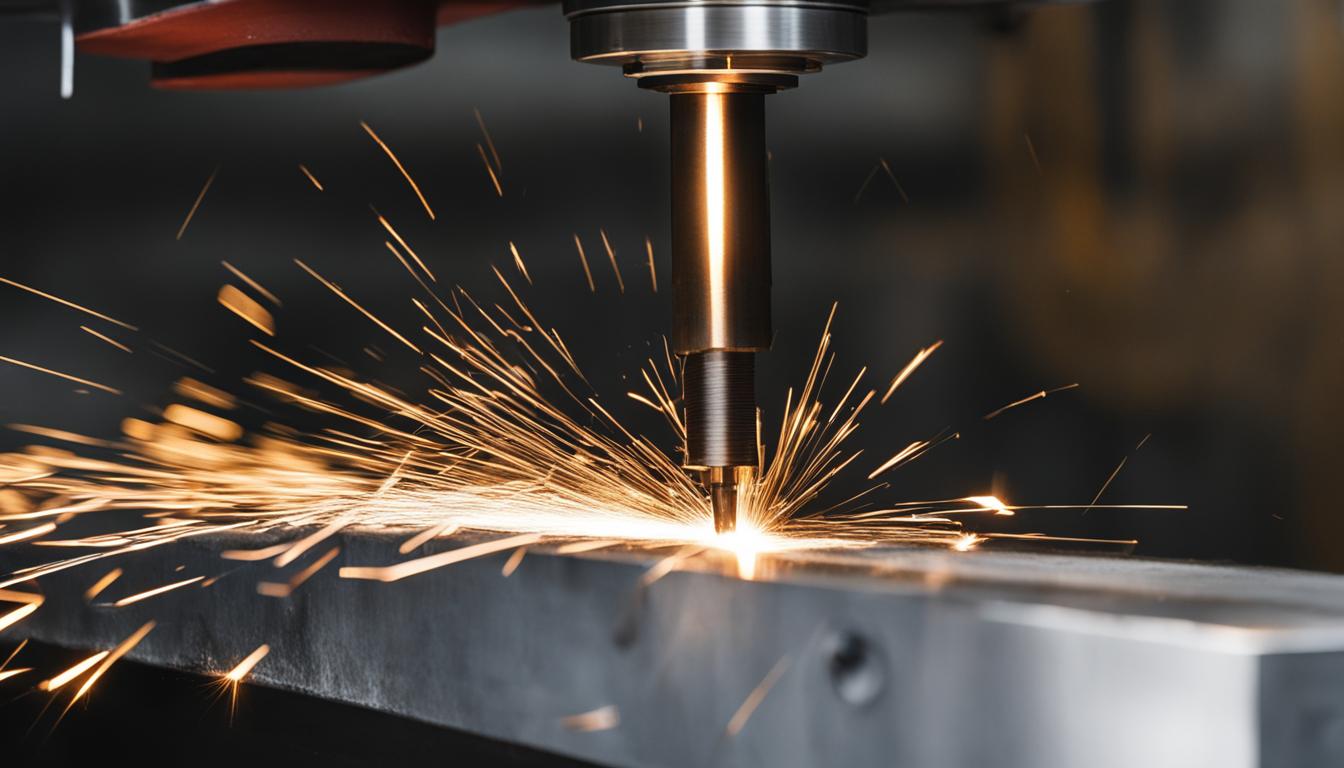Higbee threads, also known as blunt-start threads, offer a unique approach to thread cutting in CNC machining. These threads provide a full thread form at the very start, eliminating the need for additional deburring and ensuring a safe and strong thread connection. Programming CNC machines for higbee start threads requires careful consideration of factors such as tool selection, cutting techniques, and software capabilities. Additionally, the machining of blunt start threads presents its own set of challenges that must be addressed for optimal results.
In this article, we will explore the art of programming higbee and blunt start threads in CNC machining. We will delve into the advantages of higbee threads in manufacturing, discuss programming tips for both higbee and blunt start threads, and examine the standards and specifications associated with higbee threads. Furthermore, we will explore innovations in thread cutting technology, provide case studies in higbee thread applications, and discuss best practices in programming for thread milling.
- Higbee threads, also known as blunt-start threads, offer a full thread form at the very start, eliminating the need for additional deburring.
- Programming CNC machines for higbee start threads requires careful consideration of factors such as tool selection, cutting techniques, and software capabilities.
- Blunt start thread machining presents its own set of challenges that must be addressed for optimal results.
- Higbee threads provide advantages in manufacturing, including improved safety, reduced risk of cross threading, and enhanced thread strength.
- Innovations in thread cutting technology have led to improved capabilities in machining higbee threads, allowing for efficient and precise thread production.
Understanding Higbee Threads and Their Benefits
Higbee threads, also known as blunt-start threads, provide a full thread form at the very start of the thread. This eliminates the need for additional deburring and ensures a safe and strong thread. Higbee threads offer several advantages in manufacturing, including improved safety, reduced risk of cross threading, and enhanced thread strength.
Standardized specifications and guidelines are available for higbee thread cutting techniques to ensure optimal performance and compatibility with mating parts. By understanding the benefits of higbee threads and following the appropriate standards, manufacturers can achieve reliable and efficient thread cutting results.
Advantages of Higbee Threads in Manufacturing:
- Improved safety by eliminating sharp edges
- Reduced risk of cross threading
- Enhanced thread strength
Higbee Thread Standards and Specifications:
Higbee thread cutting techniques are guided by standardized specifications that outline the required dimensions, tolerances, and thread profiles for different thread sizes and applications. These specifications ensure consistency and compatibility in thread production, allowing for seamless integration with mating parts. By adhering to the established standards, manufacturers can maintain quality, reliability, and compliance in their higbee thread manufacturing processes.
Stay tuned for the next sections to learn more about programming tips for blunt start threads, tool selection for higbee thread machining, innovations in thread cutting technology, best practices in programming for thread milling, case studies in higbee thread applications, automated cutting of higbee threads, and advancements in thread milling technology. Each section will provide valuable insights and practical recommendations to optimize your thread cutting processes and achieve excellent results.
Programming Tips for Blunt Start Threads
When programming CNC machines for blunt start threads, there are specific considerations and challenges that need to be addressed to achieve optimal results. Unlike conventional threads, blunt start threads require additional machining steps to achieve the desired thread form. This section provides valuable programming tips and techniques for mastering the art of programming blunt start threads.
Precision Threading: Higbee and Blunt Start Methods
Two popular precision threading methods for creating accurate blunt start threads are the Higbee method and the blunt start method. These methods offer different approaches to achieve the desired thread form and have their own advantages and challenges. It is important to understand both techniques and determine the most suitable method based on your specific requirements and machine capabilities.
Here are some programming tips to enhance the precision and efficiency of machining blunt start threads:
- Accurate Thread Specification: Ensure that the thread specification, including pitch, depth, and start point, is accurately defined in the CNC program. This information serves as the foundation for programming the machining process.
- Tool Path Planning: Plan the tool path carefully to predict the location of the sharp edge and the full thread form of the blunt start thread. This involves considering the tool diameter, feed rates, and depth of cut to achieve the desired results.
- Optimized Machining Parameters: Fine-tune the machining parameters such as spindle speed, feed rate, and cutting depth to achieve optimal results. Experimenting with different parameters and monitoring the thread quality can help in refining the programming for blunt start threads.
- Consider Material Properties: Take into account the material properties, such as hardness and machinability, when programming for blunt start threads. Adjusting the cutting parameters and tool selection based on the material properties can significantly improve the machining process.
By implementing these programming tips and techniques, machinists and programmers can overcome the challenges associated with machining blunt start threads and achieve accurate and high-quality results. A thorough understanding of the precision threading methods and careful planning of tool paths and machining parameters are crucial for successful programming of blunt start threads.

| Challenges in Machining Blunt Start Threads | Solutions |
|---|---|
| Predicting the location of the sharp edge and full thread form of the blunt start thread | Plan the tool path carefully and optimize the cutting parameters to ensure accuracy. |
| Fine-tuning the machining process to achieve the desired thread form | Experiment with different machining parameters and monitor the thread quality to optimize the programming. |
| Consider material properties for effective machining | Adjust cutting parameters and tool selection based on the material properties to improve the machining process. |
Tool Selection for Higbee Thread Machining
Selecting the right tools is crucial when it comes to higbee thread machining. The choice of tools directly impacts the quality, efficiency, and precision of the machining process. Here are some key factors to consider when selecting tools for higbee thread machining:
Type of Cutter
Choosing the appropriate type of cutter is essential for achieving optimal results. Different cutters are designed for specific thread milling operations. For higbee threads, it is recommended to use cutters specifically designed for this thread type, as they offer improved performance and accuracy.
Cutter Diameter
The diameter of the cutter plays a crucial role in machining higbee threads. It should be selected based on the desired thread size and the material being machined. Larger diameter cutters may be required for machining threads with higher pitch or in larger workpieces.
Compatibility with Higbee Thread Milling
Not all cutters are suitable for higbee thread milling. It is important to choose cutters that are compatible with the higbee thread cutting technique. These cutters are specifically designed to remove the sharp edge during the machining process, creating the desired full thread form at the very start of the thread.
Optimizing Cutting Parameters
In addition to tool selection, optimizing cutting parameters is essential for achieving the best results in higbee thread machining. Parameters such as feed rate, spindle speed, and depth of cut should be carefully adjusted to ensure optimal chip formation, reduced tool wear, and improved surface finish.
By carefully considering these factors and optimizing tooling and cutting parameters, manufacturers can achieve high-quality higbee threads with improved efficiency and precision. Choosing the right tools and fine-tuning the cutting parameters are crucial steps in the art of programming higbee and blunt start threads in CNC machining.
Innovations in Thread Cutting Technology
The field of thread cutting technology has witnessed significant innovations in recent years, aiming to enhance the efficiency and precision of thread machining processes. These advancements have revolutionized the way manufacturers approach thread cutting, offering groundbreaking techniques and tools that deliver faster and more accurate results.
One notable innovation is the development of advanced tool geometries and coatings. These cutting-edge tools provide improved performance and durability, ensuring clean and precise thread cutting. With enhanced tool geometries and specialized coatings, manufacturers can achieve optimal chip evacuation, reduced friction, and extended tool life.
Another revolutionary innovation lies in specialized thread milling techniques. Thread milling has gained popularity due to its versatility and ability to produce high-quality threads in a wide range of materials. Innovative thread milling techniques allow for the creation of complex thread forms with ease, providing manufacturers with greater design flexibility and improved overall thread quality.
To further understand the impact of these innovations, a comparative analysis of different thread start techniques such as higbee and blunt start methods is essential. This analysis enables manufacturers to evaluate the advantages and disadvantages of each technique, allowing them to select the most suitable approach for their specific applications. By considering factors such as thread performance, machining efficiency, and compatibility with mating parts, manufacturers can make informed decisions that optimize their thread cutting process.
Ultimately, by embracing these innovations in thread cutting technology, manufacturers can achieve remarkable improvements in efficiency, precision, and overall productivity. With the ability to leverage advanced tool geometries, coatings, and specialized milling techniques, the possibilities for thread cutting are expanding, offering exciting opportunities for various industries. These innovations represent a leap forward in the art of thread cutting, empowering manufacturers to stay at the forefront of modern machining.

Best Practices in Programming for Thread Milling
When it comes to thread milling, following best practices in programming is crucial to achieving optimal results. Whether you’re working with higbee or blunt start threads, paying attention to thread specifications, software selection, and utilizing advanced software features can greatly improve efficiency and accuracy in machining operations.
To start, accurately defining the thread specifications is essential. This includes determining the thread pitch, diameter, and thread form requirements. Having precise specifications ensures that the programming software generates the correct tool paths and machining instructions for producing the desired thread geometry.
When selecting programming software, it’s important to choose a tool that supports higbee threads and offers specific features for their machining. Look for software that provides dedicated options for higbee thread programming, such as custom thread form definitions, automatic tool path generation, and simulation capabilities.
Advanced thread milling software features can streamline the programming process and enhance efficiency. These features include optimized tool path generation algorithms, thread form validation tools, and real-time simulation for visualizing the machining process. By leveraging these capabilities, manufacturers can reduce programming time and minimize errors.
Additionally, some thread milling software offers integration with CAD systems, allowing seamless transfer of thread data for programming. This integration simplifies the process and allows for a more efficient workflow, eliminating the need for manual data entry and reducing the risk of errors.
Key Best Practices in Programming for Thread Milling:
- Accurately define thread specifications, including pitch, diameter, and thread form requirements.
- Select programming software that supports higbee threads and offers dedicated features for their machining.
- Utilize advanced software features such as optimized tool path generation algorithms and real-time simulation.
- Consider software integration with CAD systems for seamless transfer of thread data.
By following these best practices and leveraging the capabilities of thread milling software, manufacturers can optimize their programming process and achieve high-quality higbee and blunt start threads. The combination of accurate specifications, specialized software features, and advanced simulation tools can lead to improved efficiency, reduced programming time, and enhanced thread machining results.
Case Studies in Higbee Thread Applications
Real-world case studies serve as valuable resources for understanding the practical applications of higbee threads in diverse industries and machining scenarios. These case studies provide insights into successful programming techniques specifically tailored for thread machining applications, including those involving difficult-to-machine materials. By studying and analyzing these case studies, manufacturers can gain practical knowledge and learn from the experiences of others when programming both higbee and blunt start threads.
One notable case study involves the implementation of higbee threads in the aerospace industry. A leading aircraft manufacturer utilized higbee thread cutting techniques to enhance the structural integrity and reliability of critical components. By programming higbee threads in difficult-to-machine materials such as titanium alloys, the manufacturer achieved superior thread quality and improved assembly performance. The case study highlights the importance of precise programming in achieving desired results when working with challenging materials.
Case Study: Higbee Threads in Aerospace Manufacturing
Industry: Aerospace
| Case Study | Challenges | Solutions | Results |
|---|---|---|---|
| Implementation of higbee threads for critical component assembly | Difficult-to-machine titanium alloys | Precision programming techniques and optimized cutting parameters | Enhanced structural integrity, improved assembly performance |
Another case study focuses on the automotive industry. A renowned car manufacturer successfully programmed higbee threads for key automotive components, including engine components and suspension systems. By utilizing advanced programming software specifically designed for higbee threads, the manufacturer achieved precise thread geometries and improved thread strength. The case study underscores the significance of using specialized software features to optimize programming for higbee start threads.
Case Study: Higbee Threads in Automotive Manufacturing
Industry: Automotive
| Case Study | Challenges | Solutions | Results |
|---|---|---|---|
| Programming higbee threads for engine components and suspension systems | Precision machining for critical automotive applications | Utilizing specialized software for higbee thread programming | Precise thread geometries, enhanced thread strength |
These case studies highlight the successful implementation of higbee threads in challenging machining scenarios, demonstrating the effectiveness of proper programming techniques tailored for specific industries. By leveraging the learnings and insights from these case studies, manufacturers can optimize their programming approaches and achieve superior results in higbee thread applications.
Automated Cutting of Higbee Threads
In the realm of CNC machining, automated cutting technologies and advanced software solutions have revolutionized the programming and machining of Higbee threads. These automated systems provide manufacturers with enhanced efficiency, accuracy, and repeatability in the production of Higbee threads. Specialized software programs specifically designed for programming Higbee threads have also emerged, offering manufacturers a seamless way to define thread specifications and optimize the entire machining process.
Automated cutting technologies have significantly streamlined the production of Higbee threads. These automated systems eliminate the need for manual intervention, allowing for precise and consistent results while reducing the chances of human error. By adopting automated cutting technologies, manufacturers can achieve greater operational efficiency and accelerate their manufacturing processes.
Dedicated software programs play a crucial role in programming Higbee threads effectively. These software solutions provide a user-friendly interface that allows manufacturers to input thread specifications, select appropriate cutting parameters, and visualize the machining process. By utilizing software for programming Higbee threads, manufacturers can optimize their machining operations, resulting in precise thread production with minimal effort.
The integration of automated cutting technologies and specialized software programs unlocks a range of benefits for manufacturers. These include:
- Improved efficiency: Automated cutting technologies enable faster and more streamlined production processes, reducing overall manufacturing time.
- Enhanced accuracy: Automated systems eliminate the errors that can occur during manual thread cutting, ensuring consistent and precise thread production.
- Greater repeatability: By programming Higbee threads using specialized software, manufacturers can achieve consistent results across multiple production runs.
- Optimized resource utilization: Automated systems help optimize material usage, minimizing waste and reducing production costs.
Innovative Automated Cutting Systems
Several innovative automated cutting systems have emerged to meet the demands of Higbee thread machining. These systems incorporate advanced technologies such as computer vision, robotic manipulation, and real-time feedback mechanisms to ensure accurate and efficient thread production.
Example of Automated Cutting Systems for Higbee Threads
| Automated Cutting System | Features |
|---|---|
| XYZ Machining System | – High-speed cutting – Integrated vision system for precise thread location – Real-time feedback for adjustments – Automatic tool change capabilities |
| ABC Precision Cutter | – Robotic arm for precise thread cutting – Multi-axis control for complex thread shapes – Automated tool calibration and wear compensation – Real-time performance monitoring |
| DEF Automation Solution | – Fully automated thread milling process – Advanced programming software for precise thread definition – In-line inspection and quality control – Seamless integration with existing CNC machines |
These automated cutting systems enable manufacturers to achieve consistent and high-quality Higbee thread production. They empower manufacturers to meet strict tolerances, optimize production cycles, and increase overall operational efficiency.
Advancements in Thread Milling Technology
Advancements in thread milling technology have revolutionized the machining of higbee threads in various metal materials. These innovative developments have introduced new possibilities and improved the efficiency and precision of thread cutting processes.
The introduction of cutting-edge cutting tools, advanced coatings, and specialized software solutions has significantly enhanced the capabilities of thread milling. These tools and coatings are designed to optimize performance, allowing manufacturers to achieve high-quality higbee threads.
With these advancements, manufacturers can now confidently machine higbee threads in a wide range of metal materials. The expanded application possibilities open doors for various industries, offering increased flexibility and versatility in thread production.
Staying updated with the latest innovations in thread cutting technology empowers manufacturers to optimize their thread milling operations. By leveraging these advancements, they can achieve precise and efficient machining of higbee threads, ensuring superior quality and performance in their products.
